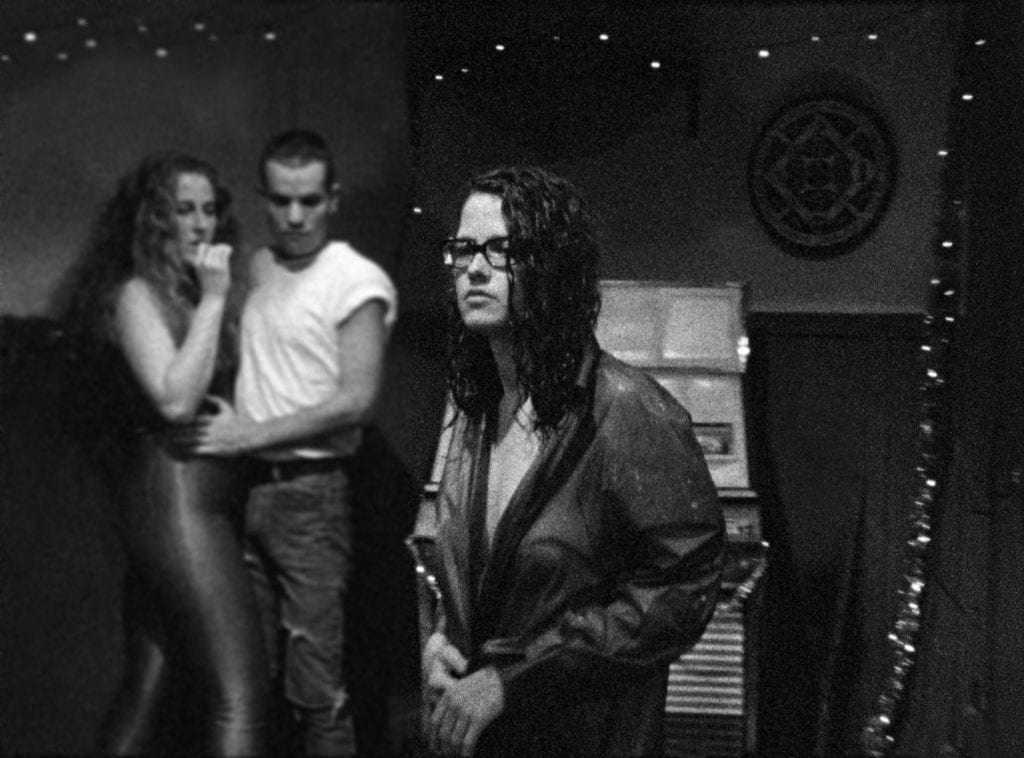
The 1980’s was an interesting time in American film history. On the one hand, the New Hollywood has ended, and a new era of commercially driven movies replaced it. On the other hand, a burgeoning independent film movement emerged, with films like Chan is Missing offering a new kind of personally driven cinema.
But there has always been an avant-garde. In art spaces, away from the centers of filmmaking, experimental filmmakers have flourished since the twenties. One such filmmaker is the great Peggy Ahwesh, who recently had a retrospective of sorts at our annual Revolutions Per Minute Festival. Among the many works screened, one stood out for this viewer: The Deadman.
This is a kind of film that engages with narrative as a starting point, as opposed to a central drive. It follows a woman who discovers her lover’s corpse, and distraught goes to a bar. She’s almost completely nude, except for a leather jacket, but this is treated somewhat ambiguously by the other patrons. Equally compelling is the way in which some background characters, like the bartender who banters with and defends the protagonist, are given some characterization.
The film has sound, but also a number of descriptive intertitles (according to Ahwesh, this was suggested by her co-director, Keith Sanborn). There is something very sardonic about the way in which they describe what is clearly conveyed, made all the more so by the skulls on the corners.
Deadman is shot in black-and white, and parts of it seem to be tinted yellow, a color that generally proves unappealing. Indeed, Ahewsh infuses the film with a sort of rancidness, from the grimy bar to the forest to the street in town (and of course, the corpse itself). Drinks get spilled, a man vomits almost randomly, a sense of decay looms large.
But even more painful for the audience is the fact that the film never seems to end. There were several scenes, such as of the woman in a somewhat peaceful state in the forest, when I believed the story was naturally ending. But that was my main mistake, because Deadman is not a vehicle for a story.
When I saw the film, my impression was that it was brutally violent; the woman seems to be somewhat deranged, and is often pushed around between people, engages in very graphic intercourse, until eventually she reaches a bizarre, sudden death. However, during the Q&A, Ahwesh and her star, Jennifer Montgomery, offered a different viewpoint (as raised by a student in the audience): that amidst the social conservatism of the 1980s, especially as it related to attitudes towards feminism, it was important to show the woman’s body fully, in all its reality. Perhaps the film was more sensitive in its approach than I gave credit, conveying a message in a unique fashion.
Ahwesh is always on the lookout to experiment with a new mode for film. For instance, with She-Puppet, she used the video game Tomb Raider to make a fascinating statement on life. She always seems to have a forward-driven attitude, embracing the possibilities that even simple tools carry. I can’t wait to see what she does next.
